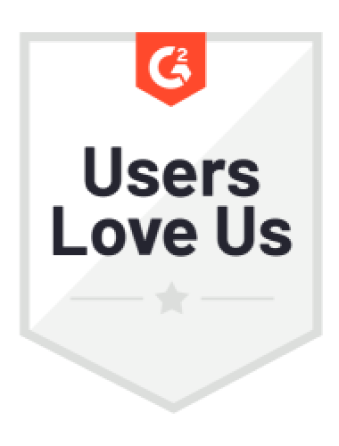The Ultimate Guide to Choosing a Data Cataloging Platform
Discover everything you need to know about selecting the perfect data cataloging platform in this comprehensive guide.

Data cataloging has become increasingly important in today's data-driven world. As organizations generate massive amounts of data, it becomes crucial to have a centralized and efficient way to manage, organize, and understand this data. This is where data cataloging platforms come into play. In this ultimate guide, we will explore the world of data cataloging platforms, understand their importance, and learn how to choose the right one for your organization.
Understanding Data Cataloging
Before diving into the selection process, let's first establish a clear understanding of what data cataloging is all about. Data cataloging refers to the process of creating a comprehensive inventory of all the data assets within an organization. It involves capturing metadata, such as data source, schema, quality, and lineage, and making it accessible to data users.
By cataloging data, organizations can improve data discovery, enable data collaboration, enhance data governance, and ultimately derive valuable insights from their data assets.
The Importance of Data Cataloging
Why is data cataloging so important? Well, without a proper data cataloging solution in place, organizations often struggle to locate and utilize their data effectively. Data is scattered across various systems, stored in different formats, and managed by different teams. This lack of visibility leads to inefficiencies, duplication of efforts, and missed opportunities.
With a data cataloging platform, organizations can create a centralized and searchable inventory of their data assets. This allows users to quickly find and understand the data they need, leading to improved decision-making, increased productivity, and better collaboration across teams.
Key Features of a Data Catalog
When evaluating data cataloging platforms, it is essential to consider the key features they offer. These features will determine the platform's ability to meet your organization's specific needs. Here are some features to look out for:
- Metadata Management: A robust metadata management capability is at the heart of any data cataloging platform. It should capture and store metadata from various data sources, providing a comprehensive view of the data assets.
- Data Lineage: Understanding the lineage of data is crucial for data governance and compliance. The platform should track and visualize the flow of data from its origin to its destination.
- Data Quality Assessment: A data catalog should allow users to assess the quality of the data, providing insights into data accuracy, completeness, consistency, and timeliness.
- Search and Discovery: The platform should provide powerful search capabilities, allowing users to quickly find and retrieve the data they need. Advanced search features, such as faceted search and natural language processing, can further enhance data discoverability.
- Data Collaboration: Collaboration features, such as data annotations, comments, and social tagging, facilitate knowledge sharing and collaboration among data users.
- Data Governance: Ensure the platform supports data governance policies and workflows, allowing organizations to enforce data standards, access controls, and data privacy regulations.
Additionally, a data cataloging platform should also provide seamless integration with other data management tools and systems, such as data integration, data preparation, and data visualization platforms. This integration enables a holistic approach to data management and empowers organizations to leverage their data assets to the fullest extent.
Furthermore, it is crucial to consider the scalability and performance of the data cataloging platform. As organizations generate and accumulate more data, the platform should be able to handle the increasing volume, velocity, and variety of data without compromising its functionality and responsiveness.
Lastly, user experience plays a significant role in the adoption and success of a data cataloging platform. The platform should have an intuitive and user-friendly interface, allowing users to easily navigate and interact with the catalog. Additionally, it should provide customizable dashboards and reporting capabilities, enabling users to visualize and analyze the data catalog's insights.
Types of Data Cataloging Platforms
Now that we have a good understanding of data cataloging, let's explore the different types of data cataloging platforms available in the market. When choosing a platform, organizations need to consider factors such as deployment options and licensing models.
On-Premise vs. Cloud-Based Platforms
One of the first decisions to make is whether to opt for an on-premise or a cloud-based data cataloging platform. On-premise platforms are installed and maintained on the organization's infrastructure, providing complete control over data security and customization. This means that organizations can have peace of mind knowing that their sensitive data is stored within their own premises, ensuring compliance with regulatory requirements.
On the other hand, cloud-based platforms are hosted and managed by a third-party provider, offering flexibility, scalability, and reduced IT overheads. With a cloud-based solution, organizations can enjoy the benefits of accessing their data catalog from anywhere, at any time, without the need for extensive hardware investments. Additionally, cloud-based platforms often come with built-in disaster recovery mechanisms, ensuring that data remains safe even in the event of a hardware failure or natural disaster.
Organizations need to carefully evaluate their security requirements, scalability needs, and resource constraints when deciding between these two options. While on-premise platforms provide greater control over data, cloud-based platforms offer convenience and scalability.
Open-Source vs. Commercial Platforms
An important consideration when selecting a data cataloging platform is the choice between open-source and commercial solutions. Open-source platforms provide flexibility, community support, and cost-effectiveness. With open-source platforms, organizations have the freedom to customize and extend the platform according to their specific needs. They can benefit from a vibrant community of developers who contribute to the platform's growth and provide support through forums and online communities.
However, open-source platforms might require more technical expertise for setup and customization. Organizations need to have skilled resources who can navigate the complexities of open-source software and ensure a smooth implementation. Additionally, organizations need to consider the long-term sustainability of the open-source platform, as it relies heavily on community contributions and support.
Commercial platforms, on the other hand, offer vendor support, built-in integrations, and advanced features that cater to specific industry needs. They often come with a price tag, but organizations benefit from professional support and regular updates. Commercial platforms are designed to meet the demands of enterprise-level data cataloging, providing robust security features, scalability options, and seamless integration with other data management tools.
Organizations should assess their budget, internal capabilities, and long-term goals to determine the best fit for their data cataloging needs. While open-source platforms offer flexibility and cost-effectiveness, commercial platforms provide a comprehensive solution with dedicated support and advanced features.
Evaluating Data Cataloging Platforms
Assessing the Platform's Scalability
Scalability is a critical factor to consider when evaluating data cataloging platforms. As your organization's data volumes grow, the platform should be able to handle increasing data loads without compromising performance. Look for platforms that offer distributed architecture, horizontal scaling, and support for big data technologies.
Additionally, consider the platform's ability to scale with your organization's evolving requirements. It should support new data sources, data types, and integration with other tools and systems.
Security Features to Look For
Data security is of utmost importance in today's data landscape. When selecting a data cataloging platform, ensure it provides robust security features. Look for features such as data encryption, role-based access controls, activity monitoring, and integration with existing security infrastructure.
The platform should comply with industry standards and regulations, such as GDPR, HIPAA, or PCI-DSS, to ensure data privacy and regulatory compliance.
Integration Capabilities
A data cataloging platform does not operate in isolation. It needs to seamlessly integrate with other tools and systems in your data ecosystem. Consider the platform's integration capabilities, support for data connectors, and compatibility with your existing data infrastructure.
Look for platforms that provide APIs, webhooks, or pre-built integrations with commonly used tools such as data lakes, data warehouses, ETL pipelines, business intelligence tools, and data governance platforms.
Making the Final Decision
Cost Considerations
Cost is an important factor in any technology decision. When choosing a data cataloging platform, evaluate the total cost of ownership, including licensing fees, implementation costs, maintenance costs, and potential hidden costs such as storage or API usage charges.
Consider the long-term benefits and ROI the platform can provide, such as increased productivity, improved data quality, and better decision-making.
Vendor Support and Training
Vendor support and training are crucial for the successful implementation and adoption of a data cataloging platform. Assess the vendor's reputation, availability of support channels, and response time for issue resolution.
Also, inquire about the availability of training resources, such as documentation, online tutorials, or instructor-led training, to ensure your team can fully utilize the platform's capabilities.
Future-Proofing Your Data Cataloging Platform
Finally, consider the future direction of your organization and the evolving data landscape. Look for platforms that demonstrate a roadmap for continuous development and innovation. Consider the vendor's investment in research and development, partnerships with other technology providers, and their commitment to staying ahead of industry trends.
Additionally, assess the platform's extensibility and flexibility to adapt to emerging data technologies, such as machine learning, artificial intelligence, or data streaming.
In conclusion, choosing the right data cataloging platform requires a thorough understanding of your organization's needs, careful evaluation of available options, and consideration of future growth and requirements. By following this ultimate guide, you are well-equipped to make an informed decision and unlock the true value of your organization's data assets.
Ready to elevate your organization's data management and unlock the full potential of self-service analytics? Look no further than CastorDoc. With our advanced governance, cataloging, and lineage capabilities, paired with a user-friendly AI assistant, CastorDoc stands out as a powerful tool for businesses of all sizes. Embrace the future of data with a platform designed for both data professionals and business users, ensuring complete control, compliance, and accessibility. Don't miss the opportunity to transform your data governance and analytics. Try CastorDoc today and experience the revolution in data management.
You might also like
Get in Touch to Learn More



“[I like] The easy to use interface and the speed of finding the relevant assets that you're looking for in your database. I also really enjoy the score given to each table, [which] lets you prioritize the results of your queries by how often certain data is used.” - Michal P., Head of Data




.png)
%202.png)

%202.png)

%202.png)
%202.png)
%202.png)

%202.png)


%202.png)

%202.png)


.png)

